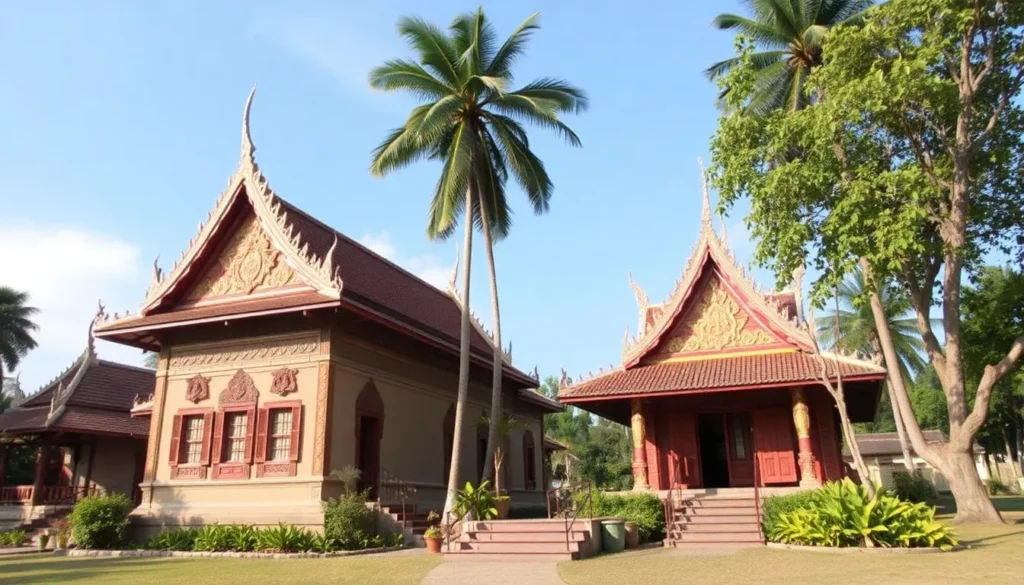Cultural clashes: Thai spirit houses and their significance

As you wander through the vibrant streets of Thailand, you might find yourself captivated not just by its breathtaking landscapes and delicious cuisine, but also by the intriguing cultural nuances that define this beautiful country. One such feature that stands out are the small spirit houses that grace the front of homes and businesses. What do these charming little structures signify? Join us on this journey to explore the rich tapestry of beliefs and practices surrounding Thailand's spirit houses, and unravel the mysteries they hold.
Understanding spirit houses in Thailand
Upon your first visit to Thailand, you'll likely notice colorful, miniature houses placed outside various establishments. These are known as spirit houses, or “san phra phum” in Thai. Traditionally, these houses serve as a sanctuary for the spirits of ancestors or land spirits who may have once inhabited the area. The belief is that these spirits should be honored and appeased to ensure harmony and good fortune.
Rather than merely decorative, these small shrines play a significant role in Thai culture. They are often adorned with offerings such as fruits, flowers, and beverages. These gifts are made daily, reflecting the Thai people's respect and reverence for those who came before them.
Why are there spirit houses everywhere?
The presence of spirit houses is a fascinating testament to the Thai belief system, which blends various elements of Buddhism, animism, and local customs. This amalgamation of beliefs gives rise to a unique perspective on life and death, where the spirit world and the physical world coexist in harmony.
- Protection: Many believe that by honoring the spirits, they can protect their homes and businesses from misfortune and negative energies.
- Connection: Spirit houses serve as a bridge between the living and the dead, fostering a connection that respects the past.
- Tradition: They embody centuries of customs passed down through generations, each imbued with historical significance.
What do spirit houses look like?
Spirit houses come in various styles and designs, ranging from simple wooden structures to elaborate, colorful shrines. Often, they reflect the personal tastes of the owners or the cultural heritage of the region. Here are some common characteristics:
- **Vibrant Colors:** Bright hues are preferred, symbolizing joy and vitality.
- **Symbolic Elements:** Many spirit houses feature intricate carvings and decorations, often depicting mythical creatures or deities.
- **Material Variety:** They can be crafted from wood, concrete, or even metal, showcasing the creativity of Thai artisans.
Making offerings: A daily ritual
For many Thais, putting out daily offerings is a heartfelt ritual. Traditional offerings include:
- **Flowers:** Fresh flowers are a staple, symbolizing beauty and respect.
- **Food:** Cooked rice, fruits, and sweets are common, reflecting the importance of nourishment.
- **Beverages:** Drinks such as water, soda, or even spirits are also offered, catering to the spirits' preferences.
This act of giving is not merely a routine; it’s imbued with deep meaning, fostering gratitude and maintaining a spiritual balance. The offerings change with the seasons and special occasions, highlighting the dynamic relationship between the living and the spirit world.
Common misconceptions about spirit houses
Despite their significance, spirit houses are often misunderstood by those unfamiliar with Thai culture. Here are a few misconceptions:
- Decorative Only: While they are visually appealing, spirit houses are primarily functional, serving a spiritual purpose.
- Only for Buddhists: People from various religious backgrounds in Thailand honor spirit houses, illustrating a broader cultural practice beyond Buddhism.
- Obsolete Tradition: Far from being outdated, spirit houses remain integral to modern Thai life, reflecting ongoing cultural beliefs.
The role of spirit houses in contemporary Thailand
In today's fast-paced society, spirit houses still hold a significant place in the hearts of many Thais. They act as a reminder of cultural roots and ancestral connections in an increasingly globalized world. Moreover, with the rise of tourism, these spirit houses have become a point of interest for travelers seeking to understand Thai culture on a deeper level.
Indeed, many visitors find themselves enchanted by the stories behind the spirit houses, often taking time to observe the rituals and offerings. This cultural engagement fosters a respectful appreciation of the local customs and beliefs.
Experiencing Thai culture: More than just spirit houses
While spirit houses are a captivating facet of Thai culture, they are merely one part of a broader tapestry of traditions and customs. When you visit Thailand, consider exploring other cultural elements such as:
- Temples: The stunning Buddhist temples offer insight into the spiritual practices of the Thai people.
- Festivals: Participate in local festivals like Songkran or Loy Krathong to experience Thai celebrations.
- Cuisine: Savoring authentic dishes like pad thai or tom yum goong adds flavor to your cultural exploration.
Each of these experiences enriches your understanding of Thailand and its people, creating lasting memories and connections.
To further immerse yourself in the culture, check out this fascinating video that delves into the traditions surrounding spirits in Thailand:
In conclusion, spirit houses in Thailand are more than just charming decorations; they represent a profound cultural practice that connects the living with the spirit world. Understanding their significance enhances our appreciation of Thai culture and encourages us to approach travel with an open heart and mind.





Deja una respuesta